 Hero XPulse 210 Colours Explained: Auto Expo 2025
Hero XPulse 210 Colours Explained: Auto Expo 2025
 Auto Expo 2025: Top 10 Highlights From Bharat Mobility Global Expo 2025
Auto Expo 2025: Top 10 Highlights From Bharat Mobility Global Expo 2025


Lately, there’s been a massive influx of big bikes in the 500-1000cc category. Consequently, it has also commanded the need for grippy yet durable tyres that do justice to the bikes’ capabilities. Moreover, with the restrictions in tyre imports, this has presented an excellent opportunity for Indian tyre makers to come up with made-in-India solutions.
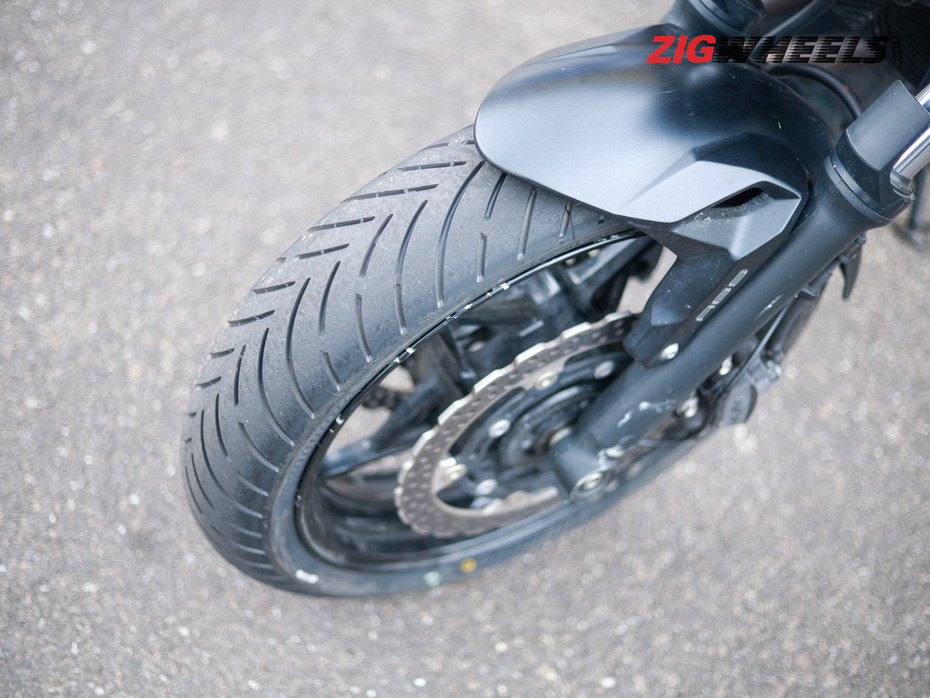
Homegrown tyre manufacturer TVS Eurogrip has recently launched the Roadhound sport touring range. These are the first zero-degree steel belt radial tyres made by an Indian tyre maker. What's a zero-degree steel belt, you wonder? Well, we’ll get to that in the following paragraphs. More importantly, these W-rated tyres have been benchmarked against popular European tyres of the same category, including the Metzeler Roadtec and Pirelli Angel GT. Take a look at the comparison between the Roadhound and the approximate prices of the Roadtec and Angel GT:
|
Sizes |
TVS Eurogrip Roadhound tyres |
Metzeler Roadtec 01 (approximate prices) |
Pirelli Angel GT (approximate prices) |
|
120/70 ZR17 58W TL (Front) |
Rs 12,999 |
Around Rs 19,000-21,000 |
Around Rs 13,000-20,000 |
|
160/60 ZR17 69W TL (Rear) |
Rs 14,999 |
Around Rs 16,000-21,000 |
Around Rs 17,000-23,000 |
|
180/55 ZR17 73W TL (Rear) |
Rs 16,999 |
Around Rs 20,000-26,000 |
Around Rs 18,000-22,000 |
While the prices of Metzelers and Pirellis vary widely depending on the vendor, the Roadhounds should be relatively easier to source, not to mention having a standard price. After a brief interactive session at the TVS Eurogrip headquarters in Madurai, followed by a factory tour, it was time for us to head to the Kari Motor Speedway in Coimbatore the following day to test out the tyres.

The overcast skies and windy but pleasant weather greeted us at Kari, and we had a choice of several 500-650cc bikes to try at the track. The list included the Kawasaki Z650, Kawasaki Ninja 650, Benelli TRK 502, Benelli Leoncino 500, Harley-Davidson Street Rod, and the Honda CBR650F.
The Roadhound tyres have a special, one-of-a-kind four-compound technology called Quadrazone. It’s got a longevity-enhancing compound at the centre, grip-biased ones at either sides, and two strips at the extreme ends of the tyres (closer to the rims) made for maximum grip for when the bike is leaned over and the tyres are pushed to their limits.
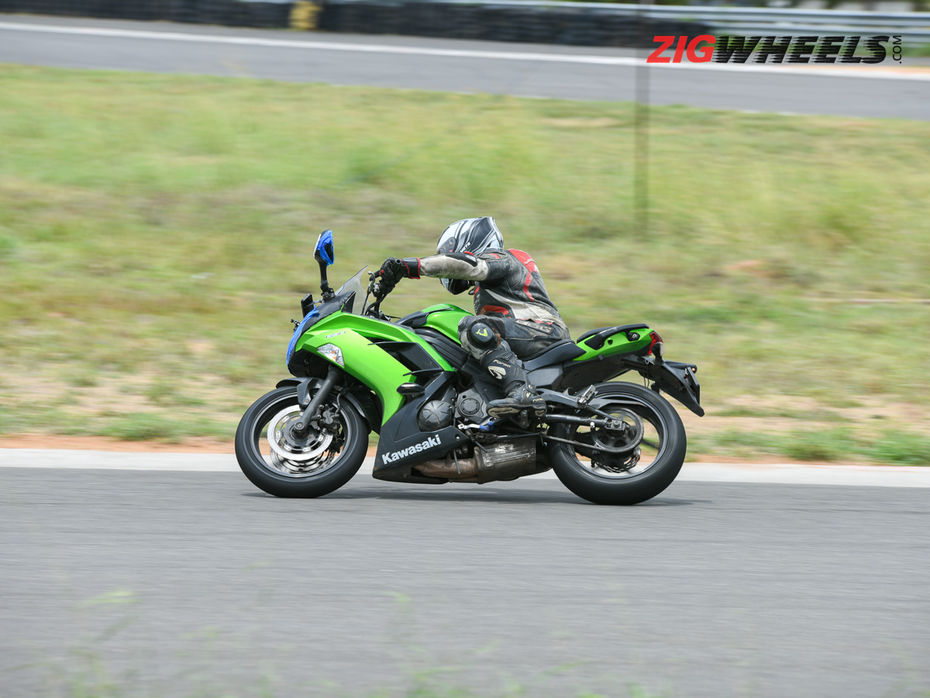
the automobile community
The first track tool for me was the Kawasaki Z650. As I was trying to get used to the bike’s dynamics, I took C1 easy, and as I was piling on the revs and momentum, I realised I hadn’t taken the lines perfectly to tackle C4 perfectly. I ended up adjusting the throttle mid corner, resulting in jerky movement. If the tyres weren’t grippy, it would’ve definitely upset the balance of the bike. However, the Roadhound’s behaviour was far from that. The tyres held up despite my noob mistakes and there was nary a hair-raising instance where I felt like the tyres were losing grip.
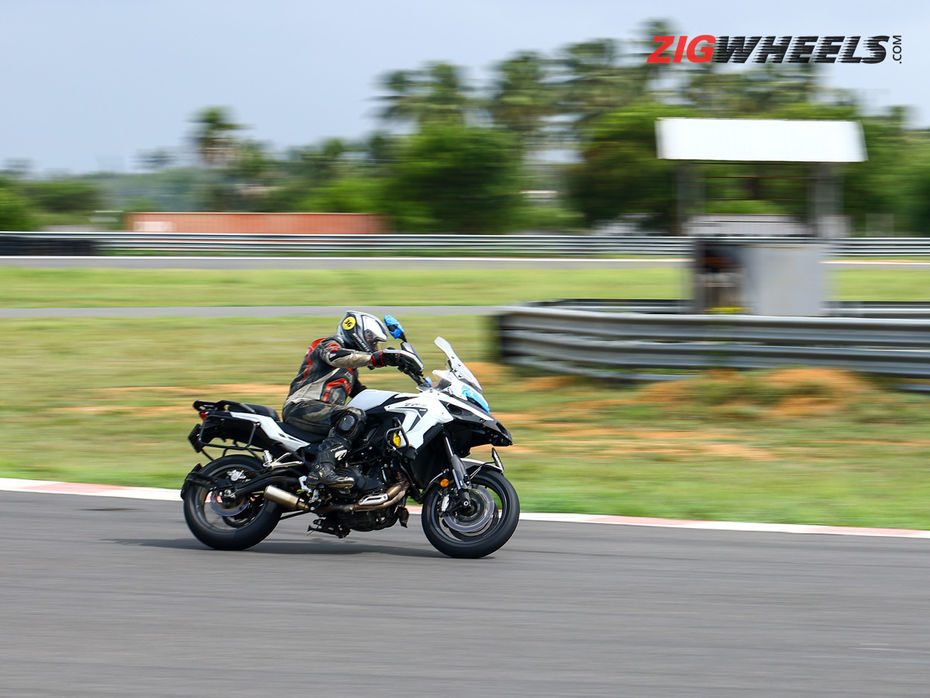
In a sense, the Roadhound felt like the big dog walking alongside you on a lonely, ill-lit bylane at night - that’s the sense of security you get from these tires. Even though the suspension on my test bike wasn’t tuned for track riding, resulting in wallow-y ride on certain corners, the tyres were forgiving enough to not mess with the rider’s confidence. It egged me to push harder lap after lap. Sivaramakrishnan Viswanathan, Chief Technology Officer, wasn’t kidding when he said that the Roadhounds serve as a means for rookie riders to learn and improve their skills without breaking their confidence when they push themselves out of their comfort zone.
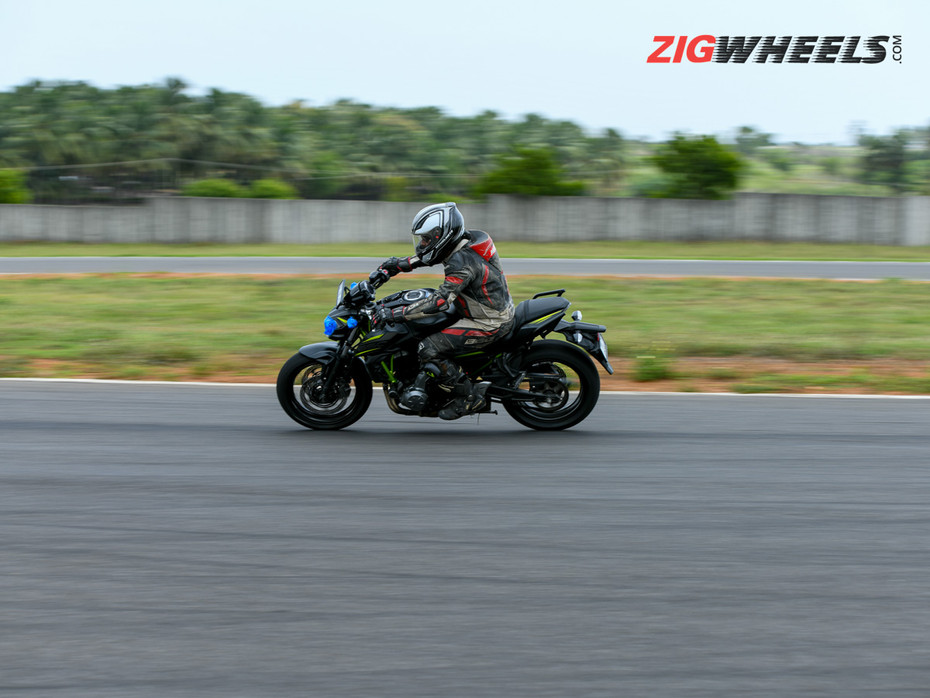
The tyres were equally confidence-inspiring on other bikes, including the Ninja, Street Rod and the TRK 502. Riding the TRK was a revelation as I was expecting the handling to be sluggish owing to its massive dimensions and heavy weight. However, the 17-inch alloys coupled with the rounded profile of the Roadhounds made it tip as easily as a 200-odd cc bike! It felt unreal as the tyres stuck to the tarmac like a leech as the tall ADV leaned closer to the ground on corners.
For all those nerds like us who’d like to know more about these tyres, here’s some bonus content for you:
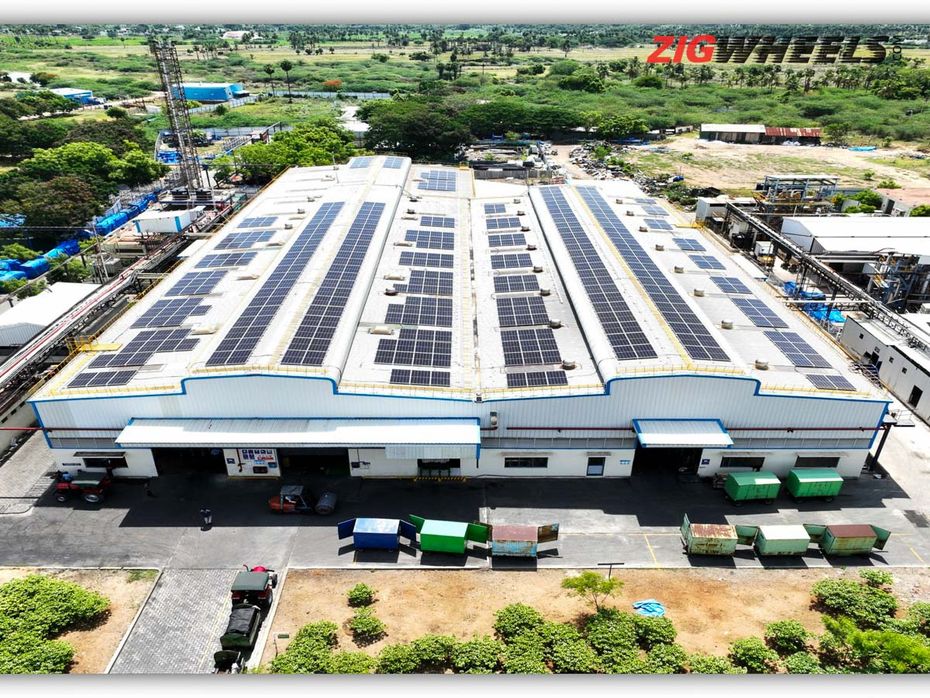
It was interesting to witness how the Roadhound tyres were made at the tyremaker’s Madurai plant. The raw materials including rubber, silica and various chemicals were sampled, tested and mixed. It then goes through a roller wherein the mixture comes out as a strip of sorts. All the four compounds in the Roadhound tyre undergo this procedure, and then they’re all extruded and merged into a single compound through sheer pressure. The machine used for extrusion also has inbuilt temperature regulators to keep the compounds stable enough to be moulded into the required composition.
It is then put on a steel mould that’s shaped like a tyre. The steel threads are wound onto the tyre in parallel to the direction in which the tyre rolls. This is the reason why it’s called ‘zero degree steel belt.’ The steel threads are wound carefully with optimised tension levels in each winding, ensuring a sturdy layer that prevents the tyre from deforming due to centrifugal forces it experiences while rotating at high speeds.
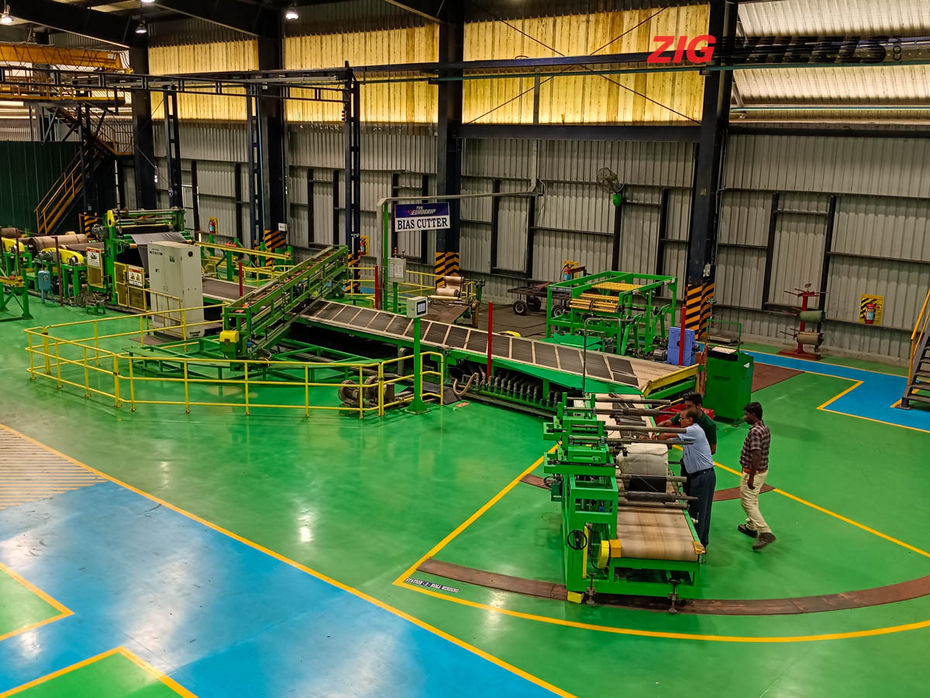
The tyre then goes into another mould where the compound is cured, treads are applied, along with other necessary specification that’s embossed on the side walls.
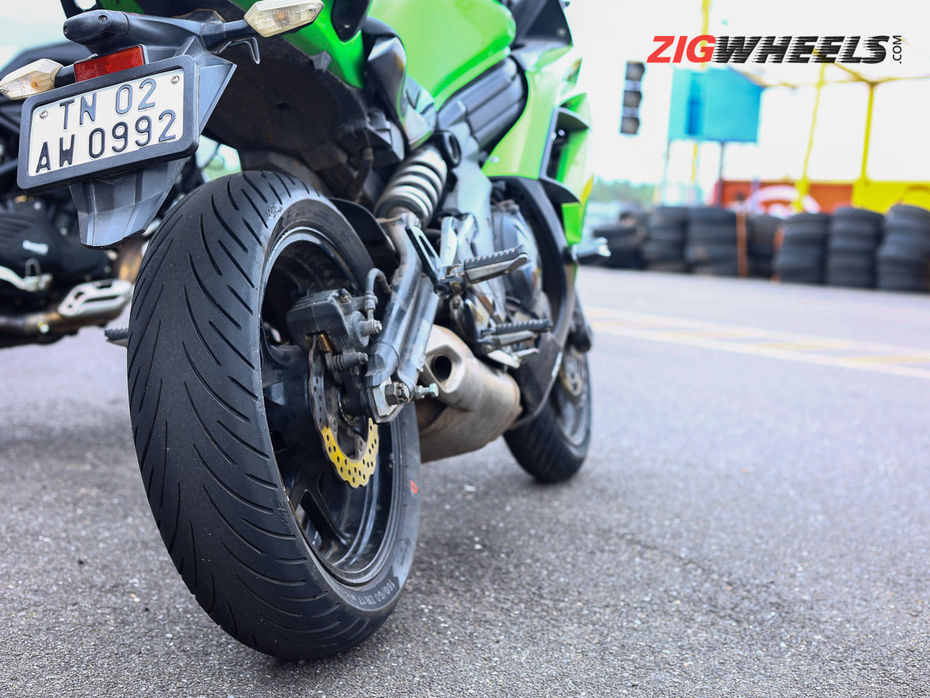
We spoke to Sivaramakrishnan, and he revealed the biggest challenge was to get the right compound which is required for achieving the target performance. “In the development process, we took a two-step approach. Step one was to finalise the profile of the tread pattern.” TVS Eurogrip worked on two tread patterns and finalised one for its optimal performance characteristics. Sivaramakrishnan said, “There were two tread patterns, which were called (codenamed) ‘Arcs’ and ‘Wings’. What finally won the selection was the Arcs.” As its name suggests, the geometry of the patterns are shaped like arcs, whereas wings look literally like a bird’s wings.
TVS Eurogrip DuraPro Tyres For TVS Radeon Review: 2,200km Long Term Review
2023 TVS Young Media Racer Program Round 1: Learning To Carve Corners At Kari
Sivaramakrishnan revealed, “We found the arcs perform well, much better especially in aquaplaning and wet conditions. And also the dynamic performance - because of the wings - the geometrical stiffness, as you go along various angles, the degradation was not uniform. In our dynamic performance we found that the arcs are giving a more uniform dynamic stiffness.”
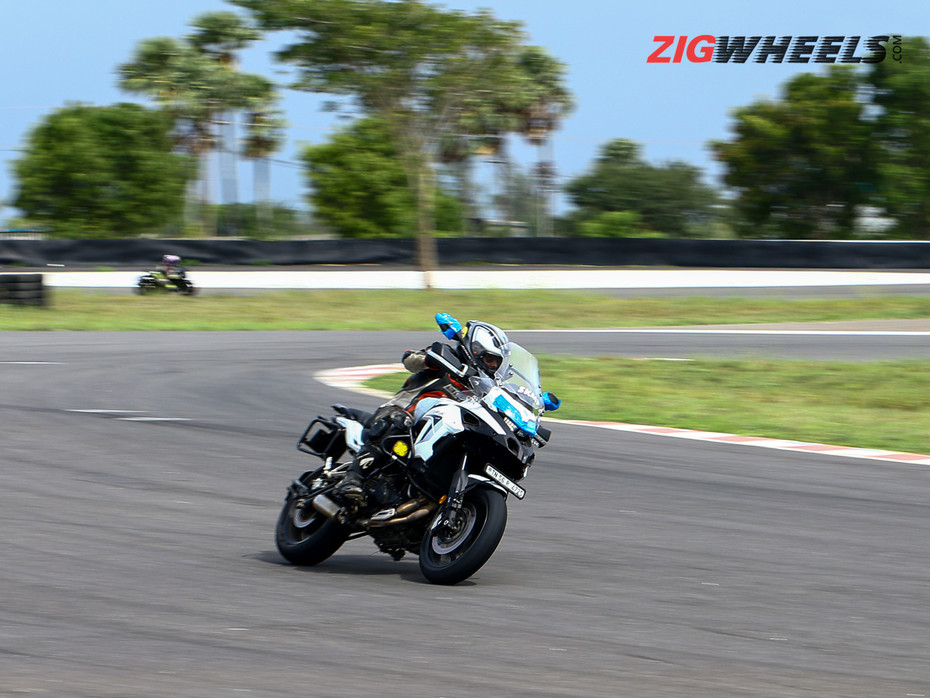
Achieving the smooth transition of the stiffness and the grip levels in the four compounds at both front and rear - and also getting the right compound was also a challenge. While the raw materials (especially the polymers) for the central zone come from Japan, the polymers for the mid-centre layers (on either side of the central compound) come from Europe. That said, the compounds (which are silica based) themselves are manufactured by TVS Eurogrip.
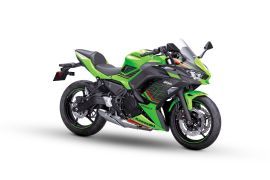
 Kawasaki Ninja ZX-4R
Kawasaki Ninja ZX-4R
 Kawasaki Z650
Kawasaki Z650
India's largest automotive community
 Kawasaki Ninja zx 10r
Rs. 16.79 Lakh
Kawasaki Ninja zx 10r
Rs. 16.79 Lakh
 Kawasaki Ninja H2
Rs. 79.90 Lakh
Kawasaki Ninja H2
Rs. 79.90 Lakh
 Kawasaki Z900
Rs. 9.38 Lakh
Kawasaki Z900
Rs. 9.38 Lakh
 Kawasaki Ninja 300
Rs. 3.43 Lakh
Kawasaki Ninja 300
Rs. 3.43 Lakh
 Kawasaki Ninja ZX-6R
Rs. 11.20 Lakh
Kawasaki Ninja ZX-6R
Rs. 11.20 Lakh
 Numeros Diplos Max E-Scooter: First Ride Review: It’s All A Game Of Numbers
Numeros Diplos Max E-Scooter: First Ride Review: It’s All A Game Of Numbers
 Royal Enfield Bear 650 Review: Is It Really A Scrambler?
Royal Enfield Bear 650 Review: Is It Really A Scrambler?
 2025 Ather 450X First Ride Review
2025 Ather 450X First Ride Review